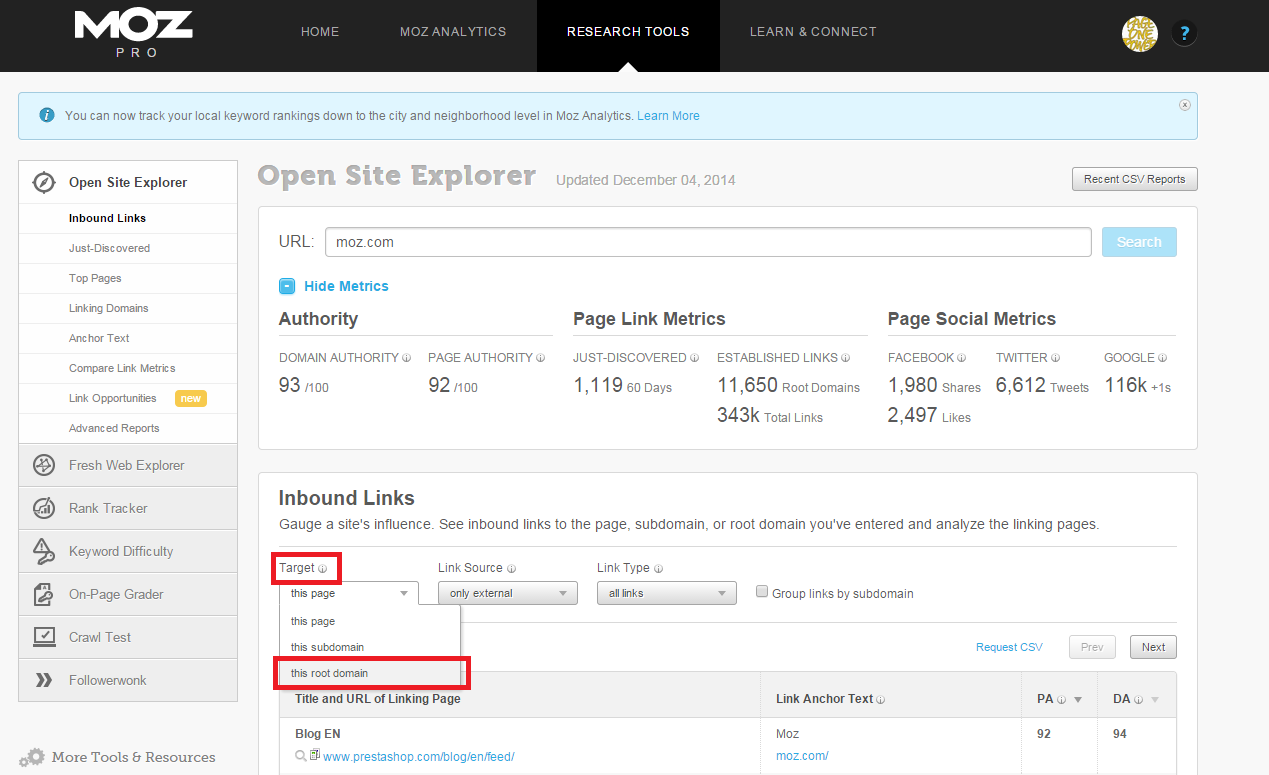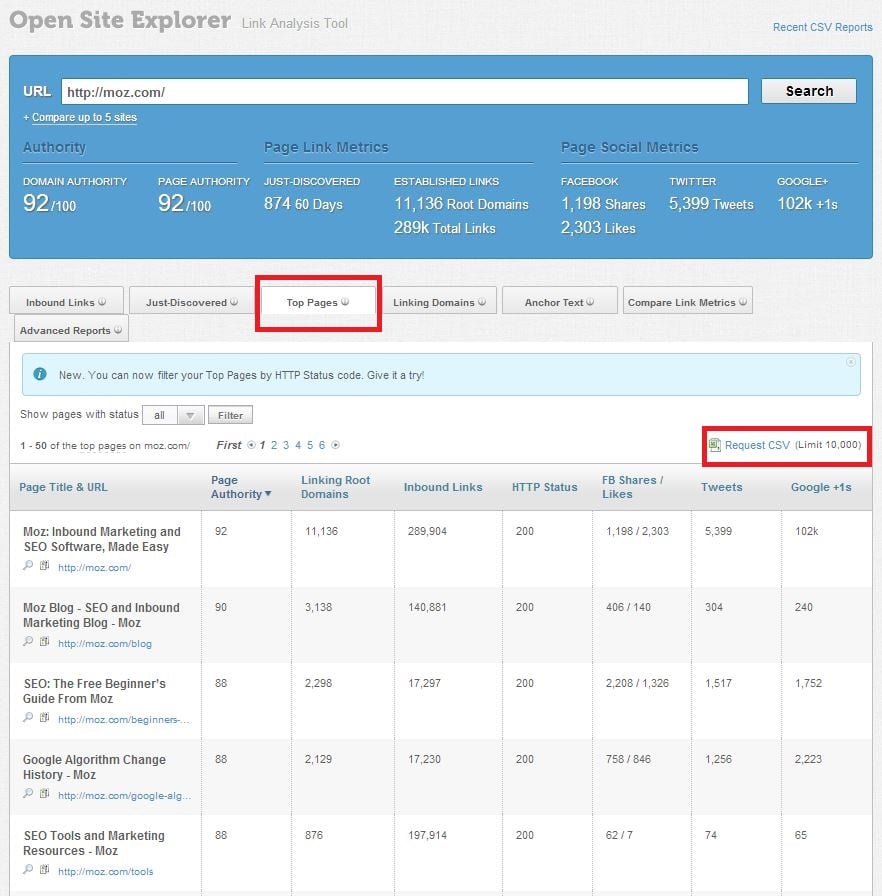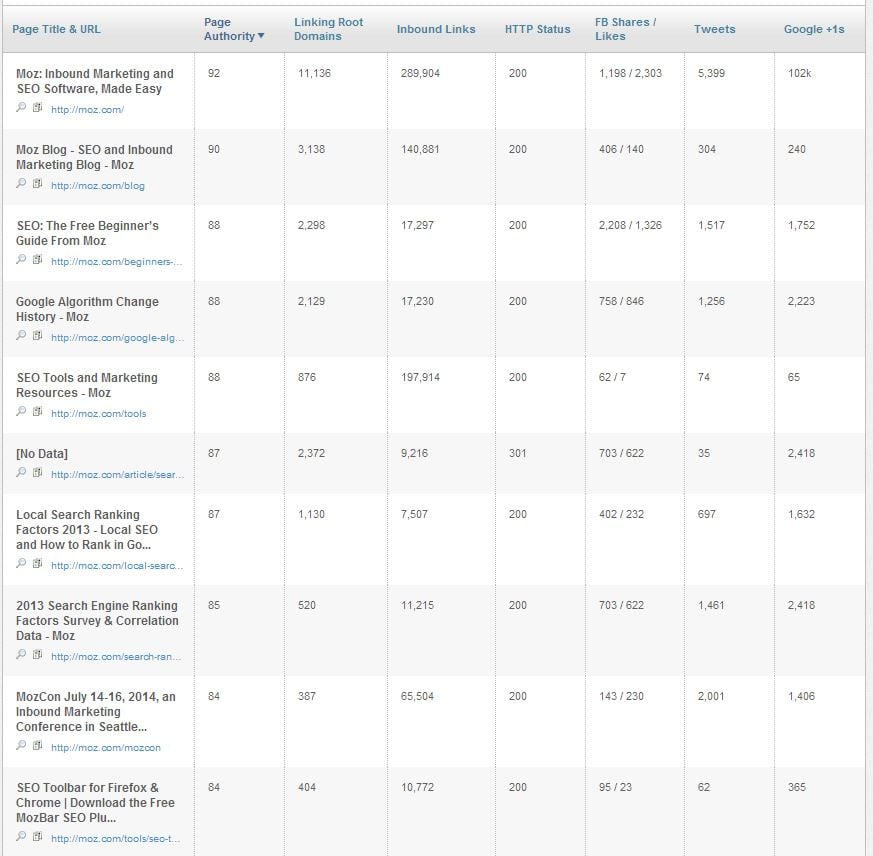Backlink explorers offer a variety of insights directly into your competitor’s website. Because links are one of the primary online currencies, and directly influence search engine visibility, understanding which pages on your competitor’s website are heavily linked will help provide insight into your niche and target audience.
Today we'll be looking at how to use Open Site Explorer to help generate content ideas that are likely to succeed.
Yesterday here at Linkarati we launched a brand new resource: A history of Google's manual actions against large brands. We actually came up with this idea using this very content ideation technique. For that reason, and because we're using their own tool, let’s use Moz as our competitor example in today's walk through tutorial.
Step One: Examining the Root Domain
With Open Site Explorer your first step should always be filter to the root domain, instead of just the page (which would be only the homepage).
This filters down a list of all the top performing pages on Moz’s entire domain, based upon Page Authority.
As with any tool, I recommend spending time testing the tool to get a sense of the functions, UI, potential data, and subsequent insights.
Step Two: Exploring Top Pages
Although filtering down to the root domain will display the top pages by Page Authority, moving over to the “Top Pages” will give us a full list and more data about the top performing pages, in terms of links, for the entire website.
Bear in mind as well that all of this is downloadable as a CSV (highlighted), which will allow you to manipulate this data in excel for even more insights. This is particularly useful if you're dealing with a large website with many successful assets, and you're looking for a multitude of ideas and insights.
For this tutorial we’ll be sticking within OSE itself.
Here’s Moz’s top 10 pages, by backlinks:
Listed plainly, Moz’s top linked pages are:
- The homepage
- The blog
- The beginner’s guide to SEO
- Google Algorithm Change History
- SEO Tools page
- The search engine ranking factors category page
- The 2013 local search ranking factors page
- The 2013 search ranking factors page
- The Mozcon page
- The Mozbar download page.
There are four actual pieces of content ranking among their top ten pages:
- The beginner’s guide to SEO
- The Google algorithm change history
- The 2013 local search ranking factors piece
- The 2013 search ranking factors piece.
Two of those are nearly identical: the local and nonlocal search ranking factors, both of which are surveys relying upon expert contributions.
If we’re to be bold, but want to create the content ourselves, that leaves us with two options left: create content similar to the beginner’s guide to SEO, or a piece of content similar (but unique) to the Google algorithm change history.
Step Three: Brainstorm
We have a few insights into Moz’s top performing pages now. Although it would be wise to go beyond the top ten, in this case we’re looking for a large creative project with heaps of potential.
The goal should be to create something similar, which will allow us to follow in Moz’s link wake, while making something uniquely our own and valuable in its own right.
After a brainstorm session we had the idea of creating the Google Manual Penalties Against Brand Names page – sort of the flip side of algorithmic action, we felt by specifically targeting Google’s actions against large brands the content would valuable for three reasons:
- Insightful: it will demonstrate what causes Google to penalize a big brand, despite potentially negative publicity.
- Historical: it will show Google’s evolution over time
- Differing perspective: The fact that Google does punish large brands, despite SEOs’ perception of Google as pandering to large brands.
Research showed no such resource (that we were able to find) had been created, so there was a content gap. Moz’s similar content showed the potential for links. And our own judgment deemed it valuable and worth creating. So, create it we did.





